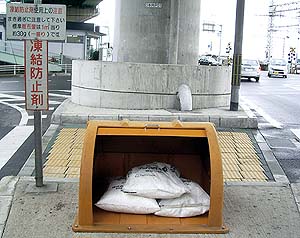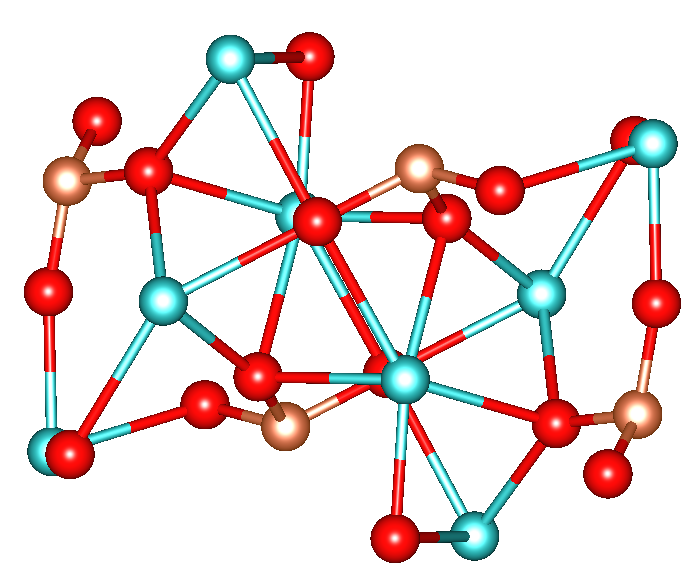|
High Blast Explosive
High Blast Explosive, or HBX, is an explosive used as a bursting charge in missile warheads, mines, depth bombs, depth charges, and torpedoes. History It was developed during World War II as a desensitized modification of Torpex explosives. "Ordnance Technical Data Sheet U.S. BOMB, 325-350-LB, DEPTH BOMB, MK 54/MK 54 Mod 1" Properties It is an aluminized (powdered aluminum) explosive having the same order of sensitivity as Composition B. Tests indicate that it is about 98% to 100% as powerful as Torpex, that it is definitely less sensitive than Torpex in both laboratory impact and bullet impact, that it is slightly more sensitive in these respects than TNT, and that it is about the same order as Composition B. "U.S. Explosive Ordnance, OP 1664, 1947" A difficulty with HBX is that water slowly reacts with aluminium ... [...More Info...] [...Related Items...] OR: [Wikipedia] [Google] [Baidu] |
World War II
World War II or the Second World War (1 September 1939 – 2 September 1945) was a World war, global conflict between two coalitions: the Allies of World War II, Allies and the Axis powers. World War II by country, Nearly all of the world's countries participated, with many nations mobilising all resources in pursuit of total war. Tanks in World War II, Tanks and Air warfare of World War II, aircraft played major roles, enabling the strategic bombing of cities and delivery of the Atomic bombings of Hiroshima and Nagasaki, first and only nuclear weapons ever used in war. World War II is the List of wars by death toll, deadliest conflict in history, causing World War II casualties, the death of 70 to 85 million people, more than half of whom were civilians. Millions died in genocides, including the Holocaust, and by massacres, starvation, and disease. After the Allied victory, Allied-occupied Germany, Germany, Allied-occupied Austria, Austria, Occupation of Japan, Japan, a ... [...More Info...] [...Related Items...] OR: [Wikipedia] [Google] [Baidu] |
Torpex
Torpex ("Torpedo explosive") is a secondary explosive, 50% more powerful than TNT by mass. Torpex comprises 42% RDX, 40% TNT and 18% powdered aluminium. It was used in the Second World War from late 1942, at which time some used the names Torpex and RDX interchangeably. Torpex proved to be particularly useful in underwater munitions because the aluminium component made the explosive pulse last longer, which increased the destructive power. Besides torpedoes, naval mines, and depth charges, Torpex was also used in the M.C 500lb and 1000lb bombs, the 4000lb, 8000lb, and 12000lb "cookie" H.C bombs and in the Upkeep, Tallboy and Grand Slam bombs as well as the drones employed in Operation Aphrodite. Torpex has long been superseded by H6 and Polymer-bonded explosive (PBX) compositions. It is regarded as obsolete and Torpex is unlikely to be encountered except in old munitions or unexploded ordnance, although a notable exception to this is the Sting Ray lightweight torpedo, wh ... [...More Info...] [...Related Items...] OR: [Wikipedia] [Google] [Baidu] |
Composition B
Composition B (Comp B), also known as Hexotol and Hexolite (among others), is a high explosive consisting of castable mixtures of RDX and TNT. It is used as the main explosive filling in artillery projectiles, rockets, land mines, hand grenades, and various other munitions. It was also used for the explosive lenses in the first implosion-type nuclear weapons developed by the United Kingdom and United States.''Atom Bombs: The Top Secret Inside Story of Little Boy and Fat Man'', John Coster-Mullen, 2003Nuclear Weapons FAQ section 8.1.1: The Design of Gadget, Fat Man, and "Joe 1" (RDS-1) accessed August 10, 2009 The standard proportions of ingredients (by weight) are 59.5% RDX ( |
Desiccant
A desiccant is a hygroscopic substance that is used to induce or sustain a state of dryness (desiccation) in its vicinity; it is the opposite of a humectant. Commonly encountered pre-packaged desiccants are solids that absorb water. Desiccants for specialized purposes may be in forms other than solid, and may work through other principles, such as chemical bonding of water molecules. They are commonly encountered in foods to retain crispness. Industrially, desiccants are widely used to control the level of water in gas streams. Types of desiccants Although some desiccants are chemically inert, others are extremely reactive and require specialized handling techniques. The most common desiccant is silica gel, an otherwise inert, nontoxic, water-insoluble white solid. Tens of thousands of tons are produced annually for this purpose. Other common desiccants include activated charcoal, calcium sulfate, calcium chloride, and molecular sieves (typically, zeolites). Desicc ... [...More Info...] [...Related Items...] OR: [Wikipedia] [Google] [Baidu] |
Nitrocellulose
Nitrocellulose (also known as cellulose nitrate, flash paper, flash cotton, guncotton, pyroxylin and flash string, depending on form) is a highly flammable compound formed by nitrating cellulose through exposure to a mixture of nitric acid and sulfuric acid. One of its first major uses was as guncotton, a replacement for gunpowder as propellant in firearms. It was also used to replace gunpowder as a low-order explosive in mining and other applications. In the form of collodion, it was also a critical component in an early photographic emulsion, the use of which revolutionized photography in the 1860s. In the 20th century, it was adapted to automobile lacquer and adhesives. Production The process uses a mixture of nitric acid and sulfuric acid to convert cellulose into nitrocellulose. The quality of the cellulose is important. Hemicellulose, lignin, pentosans, and mineral salts give inferior nitrocelluloses. In organic chemistry, nitrocellulose is a nitrate ester, not a ... [...More Info...] [...Related Items...] OR: [Wikipedia] [Google] [Baidu] |
Calcium Chloride
Calcium chloride is an inorganic compound, a Salt (chemistry), salt with the chemical formula . It is a white crystalline solid at room temperature, and it is highly soluble in water. It can be created by neutralising hydrochloric acid with calcium hydroxide. Calcium chloride is commonly encountered as a Water of crystallization, hydrated solid with generic formula , where ''n'' = 0, 1, 2, 4, and 6. These compounds are mainly used for de-icing and dust control. Because the anhydrous salt is Hygroscopic, hygroscopic and deliquescent, it is used as a desiccant.Robert Kemp, Suzanne E. Keegan "Calcium Chloride" in Ullmann's Encyclopedia of Industrial Chemistry 2000, Wiley-VCH, Weinheim. History Calcium chloride was apparently discovered in the 15th century but wasn't studied properly until the 18th century. It was historically called "fixed Salammoniac, sal ammoniac" () because it was synthesized during the distillation of ammonium chloride with lime and was nonvolatile (while ... [...More Info...] [...Related Items...] OR: [Wikipedia] [Google] [Baidu] |
Calcium Silicate
Calcium silicate can refer to several silicates of calcium including: *CaO·SiO2, wollastonite (CaSiO3) *2CaO·SiO2, larnite (Ca2SiO4) *3CaO·SiO2, alite or (Ca3SiO5) *3CaO·2SiO2, (Ca3Si2O7). This article focuses on Ca2SiO4, also known as calcium orthosilicate, or by the shortened trade name Cal-Sil/Calsil. All calcium silicates are white free-flowing powders. Being strong, cheap and nontoxic, they are components of important structural materials. Production and occurrence Calcium silicates are produced by treating calcium oxide and silicon dioxide, silica in various ratios. Their formation is relevant to Portland cement. Calcium silicate is a byproduct of the Pidgeon process, a major route to magnesium metal. The process converts a mixture of magnesium and calcium oxides as represented by the following simplified equation: : The calcium oxide combines with silicon as the oxygen scavenger, yielding the very stable calcium silicate and releasing volatile (at high temperatures) ... [...More Info...] [...Related Items...] OR: [Wikipedia] [Google] [Baidu] |
Aluminium
Aluminium (or aluminum in North American English) is a chemical element; it has chemical symbol, symbol Al and atomic number 13. It has a density lower than that of other common metals, about one-third that of steel. Aluminium has a great affinity towards oxygen, passivation (chemistry), forming a protective layer of aluminium oxide, oxide on the surface when exposed to air. It visually resembles silver, both in its color and in its great ability to reflect light. It is soft, magnetism, nonmagnetic, and ductility, ductile. It has one stable isotope, 27Al, which is highly abundant, making aluminium the abundance of the chemical elements, 12th-most abundant element in the universe. The radioactive decay, radioactivity of aluminium-26, 26Al leads to it being used in radiometric dating. Chemically, aluminium is a post-transition metal in the boron group; as is common for the group, aluminium forms compounds primarily in the +3 oxidation state. The aluminium cation Al3+ ... [...More Info...] [...Related Items...] OR: [Wikipedia] [Google] [Baidu] |
Lecithin
Lecithin ( ; from the Ancient Greek "yolk") is a generic term to designate any group of yellow-brownish fatty substances occurring in animal and plant tissues which are amphiphilic – they attract both water and fatty substances (and so are both hydrophilic and lipophilic), and are used for smoothing food textures, emulsifying, homogenizing liquid mixtures, and repelling sticking materials. Lecithins are mixtures of glycerophospholipids including phosphatidylcholine, phosphatidylethanolamine, phosphatidylinositol, phosphatidylserine, and phosphatidic acid. Lecithin was first isolated in 1845 by the French chemist and pharmacist Théodore Gobley. In 1850, he named the phosphatidylcholine . Gobley originally isolated lecithin from egg yolk and established the complete chemical formula of phosphatidylcholine in 1874; in between, he demonstrated the presence of lecithin in a variety of biological materials, including venous blood, human lungs, bile, roe, and brains of ... [...More Info...] [...Related Items...] OR: [Wikipedia] [Google] [Baidu] |







